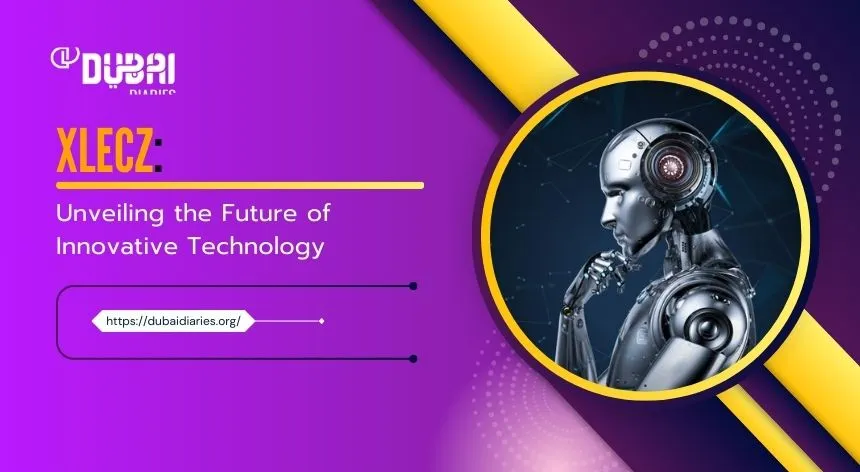In the unexpectedly evolving panorama of generation, new concepts and frameworks emerge to redefine how we interact with the digital global. One such groundbreaking innovation is Xlecz, a term that has currently captured the eye of tech fans, researchers, and enterprise leaders alike. Xlecz represents a fusion of superior computational algorithms, decentralized systems, and adaptive studying mechanisms designed to remedy complex issues across industries. This article delves into the middle standards of Xlecz, its programs, challenges, and the transformative capability it holds for the future. By exploring its key components and real-international implications, we goal to offer a complete expertise of why Xlecz is poised to turn out to be a cornerstone of next-generation generation.
Understanding Xlecz: Core Principles and Architecture
At its basis, Xlecz operates on a hybrid structure that integrates synthetic intelligence (AI), blockchain generation, and quantum computing standards. Unlike traditional systems that depend upon centralized records processing, Xlecz employs a decentralized network of nodes to make certain scalability, security, and transparency. Its AI-driven algorithms are capable of self-optimization, permitting the machine to evolve dynamically to converting inputs and environments.
The structure is divided into 3 layers: the Data Abstraction Layer, liable for aggregating and anonymizing statistics; the Computation Layer, wherein gadget getting to know fashions technique information and generate insights; and the Consensus Layer, which uses blockchain protocols to validate transactions and hold integrity. This multi-layered method guarantees that Xlecz can manage massive-scale datasets whilst minimizing latency and vulnerabilities.
Key Features of Xlecz: What Sets It Apart?
Xlecz distinguishes itself via several groundbreaking functions. First is its self-recuperation functionality, in which the system autonomously detects and rectifies mistakes in actual time, lowering downtime. Second, its power-green layout leverages quantum-inspired algorithms to limit strength intake, addressing sustainability issues in tech infrastructure.
Another standout feature is interoperability. Xlecz seamlessly integrates with legacy structures, APIs, and emerging technology like IoT gadgets, making it a versatile solution for organizations undergoing digital transformation. Additionally, its privacy-first framework guarantees compliance with international statistics safety policies (e.G., GDPR) thru end-to-cease encryption and 0-understanding proofs.
Applications of Xlecz Across Industries
The versatility of Xlecz allows its deployment in various sectors. In healthcare, it powers predictive analytics for early disorder detection and personalized treatment plans. By reading affected person records throughout decentralized networks, hospitals can collaborate securely without compromising confidentiality.In the swiftly evolving panorama of generation, new concepts and frameworks emerge to redefine how we engage with the digital global. One such groundbreaking innovation is Xlecz, a time period that has lately captured the eye of tech fanatics, researchers, and industry leaders alike. Xlecz represents a fusion of superior computational algorithms, decentralized structures, and adaptive learning mechanisms designed to resolve complicated troubles across industries.
This article delves into the core ideas of Xlecz, its programs, challenges, and the transformative ability it holds for the destiny. By exploring its key components and actual-international implications, we goal to offer a comprehensive knowledge of why Xlecz is poised to come to be a cornerstone of next-generation technology.
Xlecz
In finance, Xlecz revolutionizes fraud detection and chance management. Its AI models pick out anomalous transactions in milliseconds, whilst blockchain integration guarantees immutable audit trails. Similarly, the supply chain enterprise advantages from Xlecz’s ability to music items in actual time, optimize routes, and are expecting disruptions the use of IoT sensors and system studying.
Even innovative fields like media and entertainment leverage Xlecz for content recommendation engines and copyright protection via blockchain-primarily based ownership records.
Challenges and Limitations of Xlecz
Despite its promise, Xlecz faces hurdles. The complexity of its structure calls for specialised expertise, proscribing accessibility for smaller groups. Additionally, the computational needs of quantum-stimulated algorithms necessitate advanced hardware, raising prematurely prices.
Regulatory uncertainty additionally poses demanding situations. Finally, ethical concerns around AI bias and information misuse persist, requiring strong governance fashions to ensure accountability.
The Future of Xlecz: Trends and Predictions
Experts expect that Xlecz will pressure the next wave of virtual innovation. As quantum computing matures, its integration with Xlecz could release remarkable processing speeds, enabling breakthroughs in drug discovery and climate modeling. Meanwhile, improvements in area computing will enhance its actual-time abilities, making it essential for self sufficient motors and clever towns.
Collaborations between academia and enterprise are anticipated to address present limitations, fostering open-source Xlecz frameworks and democratizing get admission to. By 2030, Xlecz could underpin worldwide infrastructures, from electricity grids to public governance structures, cementing its function as a transformative force.
Conclusion
Xlecz stands on the intersection of innovation and practicality, offering solutions to some of the most urgent demanding situations in contemporary generation. Its specific blend of decentralization, AI, and quantum concepts positions it as a catalyst for progress throughout industries. While obstacles stay, ongoing studies and collaborative efforts promise to unencumber its full ability.





